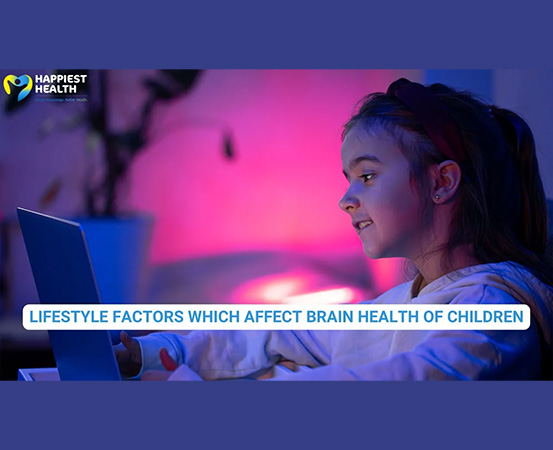
The eyes are among the most sensitive of your five vital sense organs. Though eye conditions like cataracts and glaucoma are a major load of eye diseases worldwide, close behind them is cancer.
The eyeball, the eye socket or orbit and accessory structures form the three main parts of the eye. Cancer can show up in any part of the eye and at any age from childhood to the 60s. It may develop in the eye itself or its parts. Cancerous cells travelling from an affected part of the body can also cause malignancy there.
Let us look at the different cancers affecting parts of the eye, their causes, the therapy and how to prevent them.
Different eye cancers
Melanoma: Melanoma is a benign (non-spreading) cancer that develops from melanocytes that produce melanin – a pigment that gives colour to the skin, hair and some parts of the eye.
Melanoma of the eye (ocular melanoma) develops mostly in the part called the eyeball choroid, a tissue bed for the retina that has numerous pigmented cells – rods and cones. It can also develop in the iris (the coloured outer disc that we see) and the ciliary body (a muscle that produces the eye fluid and helps the eye to focus). However, the conjunctiva (the outermost layer) and eyelid rarely develop melanoma.
While a lighter eye colour, unusual moles, overexposure to sunlight and increasing age pose greater risks of developing melanoma, one should not delay visiting the ophthalmologist if there are symptoms such as seeing shadows and dark patches, flashes of light, blurred vision, partial or complete loss of vision, bulging of the eye, lump on the eyelid and pain. However, the symptoms can be due to other eye conditions as well.
Melanoma is diagnosed by eye examination, eye ultrasound, fluorescein angiogram or by analysing a small piece of the tumour to establish the type, size and site of the cancer.
Eye cancers in childhood
In general, cancer is never biased by the age or gender of a person. However, children below the age of ten years are more susceptible to certain eye cancers.
Retinoblastoma, a rare cancer that develops in the retina of one or both eyes, usually affects children below the age of five years. Nine out of ten cases can get completely cured of it if detected early.
The UK’s National Health Service (NHS) says that in four out of ten affected children, faulty genes cause this cancer. However, in the case of the remaining six, the reason is yet to be ascertained.
It is advised to consult an ophthalmologist if you notice a white reflection in the pupil (the central opening in the iris), a change of colour in the iris, redness or swelling, a change in vision or focus or a squint.
Not only the retina, but the ciliary body of the eye can also develop a type of cancer, called medulloepithelioma. This type usually affects the young below the age of ten years and shows up as vision change, bulging of the eye and pain in and around the eye.
Surgery is the sole option to get rid of both kinds of cancer.
Eyelid carcinoma: The basal and squamous cell covers and protects the outer body surface, mostly the skin, as well as the eyelids. Though being a protective cell, it can show abnormal growth that could extend to the eyelids.
Most skin cancers arise from this layer. Cancer of the eyelids can be detected from a change in its colour and appearance, swelling or thickening of the eyelid, and broken or ulcerated eyelid with no or delayed healing. The ophthalmologist can identify the condition easily and can treat it with chemotherapy or surgery on the affected eyelid.
Lacrimal gland tumour: Also called the tear gland, the lacrimal gland is an accessory structure around the eyeball. It secretes a fluid to moisten, lubricate and protect the eye surface while tears are a part of this fluid.
Cancer of this gland is rare and the ophthalmologist can detect it from symptoms such as a swelling or bulging of the eye, a lump towards the upper part of the eye and pain around the affected eye. Chemotherapy, radiotherapy or surgery are the normal lines of treatment.
Rhabdomyosarcoma: Soft tissues that connect, surround, and support the organs, bones or nerves can develop this cancer. In the eyes, a soft tissue that holds the eyeballs in the eye socket can develop cancer.
Though a rare form it affects young children, and sometimes, babies and the elderly. The physician can diagnose it from certain symptoms including droopy and bulging eyes or eyelids. Early detection helps treatment. Chemotherapy, radiotherapy and surgery are the standard treatment practices depending on the condition of the eye
Sources:
- https://www.cancerresearchuk.org/about-cancer/eye-cancer/stages-types/types
- https://www.nhs.uk/conditions/eye-cancer/#:~:text=soon%20as%20possible.-,Melanoma%20of%20the%20eye,most%20commonly%20affects%20the%20eyeball.
- https://www.nhs.uk/conditions/retinoblastoma/
- https://www.aao.org/eye-health/diseases/eye-cancer
- https://www.cancer.org/cancer/eye-cancer/causes-risks-prevention/risk-factors.html

















